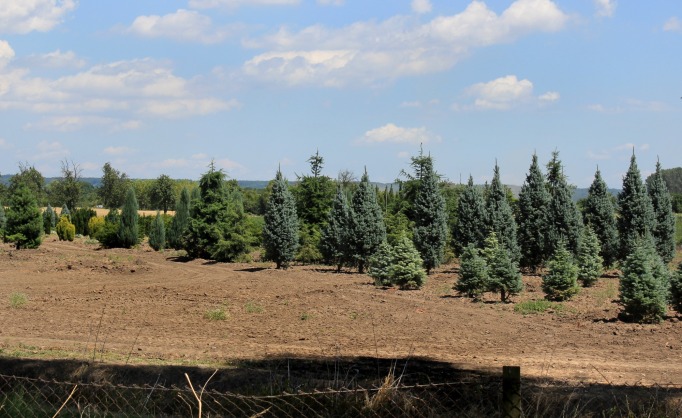A trip to a nursery or garden centre can be a daunting experience. So many choices, so many trees.
(Photo credit: “Chotusice, Druhanice, forest tree nursery" by Pavel Hrdlička, licensed under CC BY-SA 4.0.)
(Continued from Planting 2: Site selection)
A trip to a nursery or garden centre can be a daunting experience. So many choices, so many trees. Here is the tree I want, but there are 23 of them. Which one?
Before you get to the retail stage, I hope you have done your homework. Site and species selection are very important. The tree you choose should be as healthy as possible. Look for bright, rich foliage.
Check the shoot extensions for last year’s growth. In fact, there is no better indicator of vigor than the shoot extensions. Find the bud at the tip of the shoot and follow the shoot back to the previous bud scar. This is where the last small side branches are. The bud scar is a small ring in the bark, marking off where the shoot grew from last year's bud. As each bud forms, it leaves a small ring in the bark at its base. When next year’s growth begins, that ring or bud scar stays in place and the new shoot extends out from it. Each increment of shoot between bud scars is one year’s growth. If a series of bud scars is all packed up close together, you are looking at a stressed tree. If the distance between bud scars is great, you may be looking at an over-fertilized tree.
Now look at the trunk. If it is wrapped with paper or something else, remove this so you can see all of the bark. Do not buy a tree that has wounds in the bark. These wounds will cause problems you don’t need. See my post on compartmentalization.
Look closely at the trunk and branches. How the branches are formed and attached to the trunk is very important. Check the angles between the trunk and branch. What we want are wider U-shaped junctions between trunk and branch rather than narrower, tight V-shaped junctions. The narrow V-shaped junctions could indicate included bark, which makes it easy for a branch to split off of its trunk. The surest indicator of included bark is an incomplete branch collar. The collar is a protection zone at the base of the branch. It has the physical structure of a ring, a swelling of tissue, a doughnut. A well-attached branch has a well-defined collar. In an included-bark crotch, the top section of the collar is folded into and included within the crotch.
If you have found a vigorous tree with a good history of shoot extensions and without any included bark, you should buy that tree!
I like Plantation Garden Centre at 2408 - 4th St NW in Calgary. For larger trees, I really like Everblue Nursery. There are two Calgary locations: one just west of town on the 1A and the other on Highway 8.
(Continued in Planting 4: Root crown identification)
(Photo credit: “Chotusice, Druhanice, forest tree nursery" by Pavel Hrdlička, licensed under CC BY-SA 4.0.)









